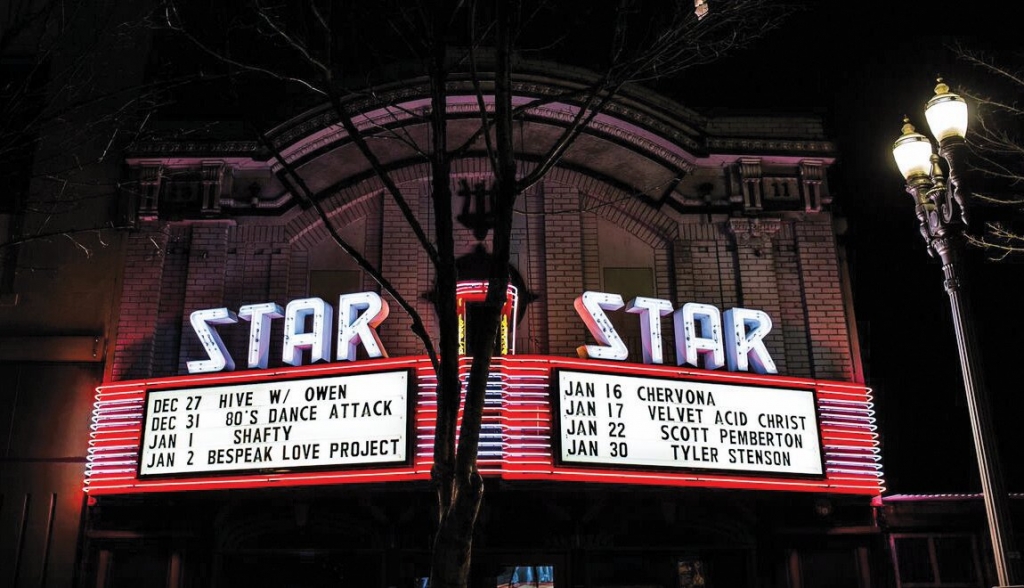Old Town comprises Portland, OR’s original, urban core, and Chinatown represents a 175-acre tract within the neighborhood, where Chinese immigrants settled en masse beginning in the late 19th Century. Old Town’s development began in the 1870s, and it gradually built up through 1914. Businessmen Bill and Sam Naito helped stem the area’s decline in the 1960s by redeveloping aging buildings, opening a retail store and encouraging investment in Old Town. The Chinatown enclave had faced a similar decline, but streetscape renovations and the development of the Lan Su Chinese Garden in 2000, a $12.8 million investment that covers a city block, revitalized interest in the neighborhood.
The Old Town/Chinatown area has become an entertainment-destination neighborhood with various dining, live-music and retail options. And, of course, signage serves as a catalyst for enlivening community spirit. Security Signs, a Portland-based signshop since 1925, has fabricated approximately 20 Old Town/Chinatown signs in recent years, Dylan Martin, a Security Signs project manager, said.
“Many of these buildings are historic, and they require historic-land-use approval for any exterior signs that are mounted to the building,” he said. “They carry a 32-sq.-ft. restriction for exterior signs, and the approval process can require months and thousands of dollars. There are times when the permitting process costs us more than the production and installation of the signs.”
Security fabricated an exposed-neon sign for the Duck Store, an affiliate of the Univ. of Oregon’s bookstore co-op. Originally, the project had been planned as 30 sq. ft., but Portland’s historical-design-review board reduced its allowable size to 14 sq. ft. Reflective of the Oregon Ducks’ school colors, the sign features 40 linear ft. of veep-green, yellow and white, 10mm luminous tubing installed within a painted-aluminum, welded structure. To install the sign to the wall, Security constructed 1/8-in.-thick tube steel welded to a 3/8-in.-thick steel plate that’s through-bolted into the building’s cast-iron façade and the underlying brick wall.
“A cast-iron exterior is a unique architectural feature, and building a structure that could be installed over it required considerable engineering,” Martin said.
To complement the Duck Store’s main-ID sign, Security also built a window-mounted, illuminated hanging sign, as well as unlit wall-mounted signs for the store and its onsite coffee bar.
Security also built a sign for 2BWell, a holistic medical provider in Old Town. To fabricate the LED-lit, enclosed sign, Security verified its building structure to confirm attachment areas, and worked with an electrician to assure the circuit would be accessible for power connection on installation day. The shop shaped the aluminum cabinet on a MultiCam CNC router, and 1-in. aluminum spacers and wedge anchors secure the sign to the wall. A layer of 2-in.-thick 3Form textured acrylic sheaths with white and green LEDs that illuminate the channel letters.
“The [3Form] material isn’t very commonly used for this type of application, so there were many unknowns,” Kevin Hallwyler, another Security project manager, said. “We went through an extensive sample review process to make sure it was both attractive and provided sufficient light output.”
To install the sign, a scissor lift was delivered to the jobsite to work within the site’s narrow footprint on a street with high pedestrian traffic.
A destination neighborhood wouldn’t be complete without trendy hotels to sleep off an evening’s revelry. Four Portland entrepreneurs – Matt Siegel, Jessie Burke, Jonathan Cohen and Gabe Genauer — joined forces to open The Society Hotel in Old Town Chinatown. The site had been originally built in 1881 as the Mariners Home, a place where fishermen and seafarers stayed in between maritime excursions. Sometime during the 1950s, it ceased to function as a hotel, although the lower floors were used for special events by local Chinese-American organizations.
In 2013, renovation began for the iconic facility, which features one of the few remaining cast-iron edifices in Portland. More interestingly, when the upper floors were opened up, a treasure trove of dusty memorabilia spewed forth, and is now incorporated into kitschy visual communications.
“Neither I, nor any of my partners, have previously worked in the hospitality arena,” Siegel said. “We wanted to create a legacy project that would provide a unique property that speaks to our history.”
Two and a half years and a $678,000 grant later (from the Portland Development Corp.), the Society Hotel came to fruition. The ownership group hired Eugene, OR-based ES & A Sign Co. to build the sign. Smith & Connors, the firm that designed The Society’s logo, referred the shop.
The shop assembled the entire, welded-aluminum cabinet as a single piece in the shop, and white neon beckons to Old Town visitors.
“From the owners to the architect to a strict review board, there were a lot of people involved in the project, and it’s a challenge to keep them all happy,” Buzz Blumm, ES & A’s production manager, said.



 Tip Sheet1 week ago
Tip Sheet1 week ago
 Photo Gallery2 days ago
Photo Gallery2 days ago
 Ask Signs of the Times4 days ago
Ask Signs of the Times4 days ago
 Real Deal1 week ago
Real Deal1 week ago
 Benchmarks6 days ago
Benchmarks6 days ago
 Women in Signs1 week ago
Women in Signs1 week ago
 Photo Gallery1 week ago
Photo Gallery1 week ago
 Women in Signs1 week ago
Women in Signs1 week ago







